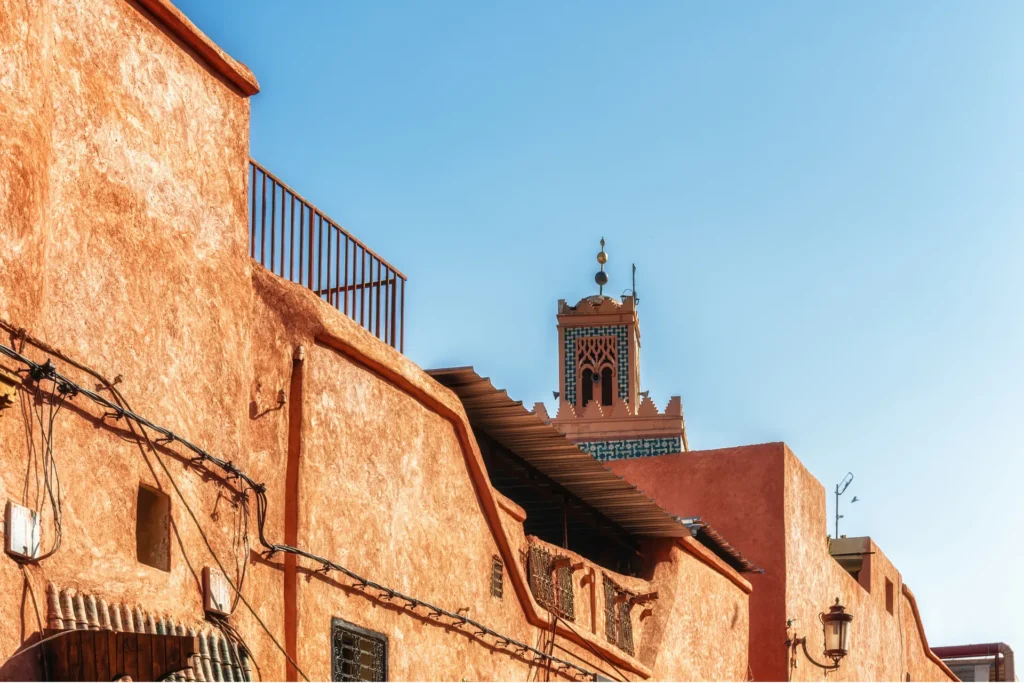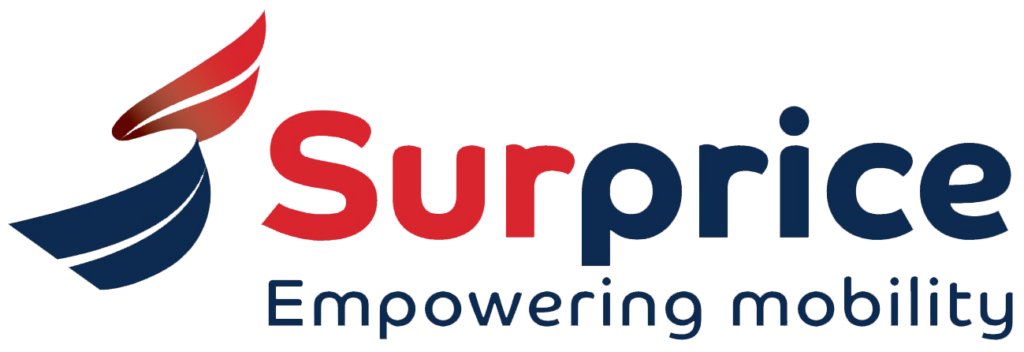Driving in the Morocco
Tips for the Road
- Morocco follows the right-hand driving system.
- At intersections, drivers should yield to traffic approaching from the right.
- In Morocco, it’s illegal to turn right on a red light, unless there’s a sign or signal specifically authorizing it.
- Using mobile phones while driving is illegal unless a hands-free device is used.
- Traffic checkpoints are common, especially on main roads leading to major cities. At checkpoints, you must stop and may be required to present documents like vehicle registration and insurance papers.

Road Types and Speed Limits
- Speed Limit: Typically 120 km/h (75 mph), though it may be reduced in certain areas or during adverse weather conditions.
- Characteristics: Moroccan motorways, including toll and free expressways, connect major cities and regions. They are part of one of the most developed infrastructures in Africa, featuring modern amenities and service areas.
- Speed Limit: Generally around 100 km/h (62 mph) outside urban areas and on expressways.
- Characteristics: National roads form a significant portion of Morocco's road network, connecting larger cities and towns. These roads, comprising 41% of the country's network, are crucial for national connectivity and provide access to various regions.
- Speed Limit: Varies, but generally around 80-100 km/h (50-62 mph) on regional roads and slightly lower on provincial roads.
- Characteristics: Regional (21% of the network) and Provincial roads (18% of the network) serve to connect smaller towns and villages, playing an essential role in local connectivity and economic activities. They traverse diverse landscapes, including rural and semi-urban areas.
- Speed Limit: Typically around 60 km/h (37 mph) within urban areas, but it can be as low as 40 km/h (25 mph) in built-up areas.
- Characteristics: Urban roads handle local traffic within cities and towns, providing access to residential and commercial areas. They are integral to daily commuting and urban transportation.
In Morocco, you'll find toll roads on the autoroute system, where you pay based on distance traveled. Options for paying these tolls include cash and credit cards. There's also the Jawaz system, a convenient electronic toll method. You can get a Jawaz tag at highway service centers or certain gas stations or online. Stick it on your windshield, and it automatically pays tolls as you drive, letting you zip through special fast lanes at toll booths. This is especially handy for frequent travelers on Morocco's highways, making trips quicker and easier.
- A7 Expressway (Casablanca-Marrakech): The A7 is a well-known expressway that connects the major cities of Casablanca and Marrakech. This highway is a key part of Morocco's expressway network, facilitating efficient travel between these urban centers.
- N1 National Route: National Route 1 (N1) is an important highway that runs along the western Atlantic coast of Morocco. It extends from Guerguerat, near the border with Mauritania, to Tangier in the northwest, passing through key cities like Rabat and Larache. It is the longest national motorway in the country and a part of a major transport corridor from Morocco to Senegal.
- N9 National Route (Marrakech-Ouarzazate): The N9 is a notable route that connects Marrakech with Ouarzazate, passing through the High Atlas Mountains. This road is renowned for its dramatic mountainous scenery and serves as a vital link for tourists traveling to the Sahara Desert and other attractions in the region
Top City Destinations

Casablanca
Casablanca, a timeless city that evokes a sense of romance and mystique. Explore the narrow lanes of the Old Medina, a traditional walled town buzzing with the hustle and bustle of daily Moroccan life, where you can find various local crafts and goods. Wander through an array of colorful bazaars and artisanal shops, brimming with intricately woven Berber carpets, hand-painted ceramics, aromatic spices, and finely crafted leather goods. Don’t miss the chance to savor local delicacies from street vendors, offering traditional Moroccan treats like pastries and mint tea. Be sure to visit the city’s huge mall, the biggest in Africa. For nostalgic film lovers, a visit to Rick’s Café is a must. Inspired by the iconic movie “Casablanca,” this stylish restaurant and bar offers a nostalgic nod to the classic film, complete with period décor and a piano reminiscent of the one played by Sam in the film. A visit to the Hassan II Mosque, an architectural waterfront marvel and one of the largest mosques in the world, is also essential. Its grandeur and oceanfront location make it a spectacular sight, where you can admire the fine craftsmanship of its marble, granite, and wood, along with the beautifully crafted tiles – a traditional Moroccan art form known as zellige.
Marrakesh
Known as the Red City, Marrakesh is a captivating destination where you can wander through its labyrinthine souks, where a lively haggling session over spices and textiles awaits you. For a true taste of local tradition, indulge in a Moroccan hammam, where the soothing heat, exfoliating treatments, and relaxing massages offer a unique rejuvenation for both body and mind. The city’s culinary landscape is equally enticing; delve into the rich flavors of Moroccan cuisine by trying local dishes like tagine, couscous, and pastilla, or take a cooking class to learn the art of preparing these delicacies yourself. Step into the Saadian Tombs, and be transported back to the glory days of the Saadian dynasty, with each tomb being a masterpiece of artistry, adorned with intricate carvings. For a dose of adventure, consider the exhilaration of quad biking in the desert or a serene camel ride, each offering a unique perspective on the stunning landscapes surrounding Marrakesh.


Tangier
Tangier, known as The Gateway to Africa, stands out as a Literary and Artistic Haven, drawing in many writers, artists, and musicians over the years. Soak up the city’s vibrant café culture at famous spots like Café Hafa, perched on a cliff overlooking the Mediterranean, a favorite haunt of notable writers and artists. Venture to Cape Spartel, a scenic spot where the Atlantic meets the Mediterranean, and explore the nearby Caves of Hercules, a natural wonder with openings shaped like the map of Africa. Spend a day at the beach, soaking up the sun on the golden sands, swimming in the clear waters, and enjoying the laid-back atmosphere that Tangier’s coastline offers. For those seeking a more adrenaline-fueled experience, the beaches around Tangier also offer popular activities like jet skiing, windsurfing, and kitesurfing, blending relaxation with adventure in this culturally rich and historically significant city.
Rabat
Rabat, the capital city of Morocco, where you’ll be amazed by the stunning architecture and rich history at every turn. Begin your exploration at the Kasbah of the Udayas, where the blue and white walls create a breathtaking contrast against the Atlantic Ocean. Explore the iconic Hassan Tower, an architectural marvel, alongside the adjacent Mausoleum of Mohammed V, a masterpiece of architecture. Work up an appetite by wandering through the ancient Roman and Islamic ruins at Chellah, a site with a fascinating history before indulging in the local flavors at Rabat’s vibrant cafes and restaurants, or immerse yourself in the city’s emerging art scene at the Mohammed VI Museum of Modern and Contemporary Art, featuring both Moroccan and international artists. The city’s beautiful beaches, such as Plage de Rabat and Plage des Nations, are perfect for unwinding and enjoying various water activities. Finally, end your day with a visit to the Bou Regreg Marina, offering a blend of dining, and stunning river views.

